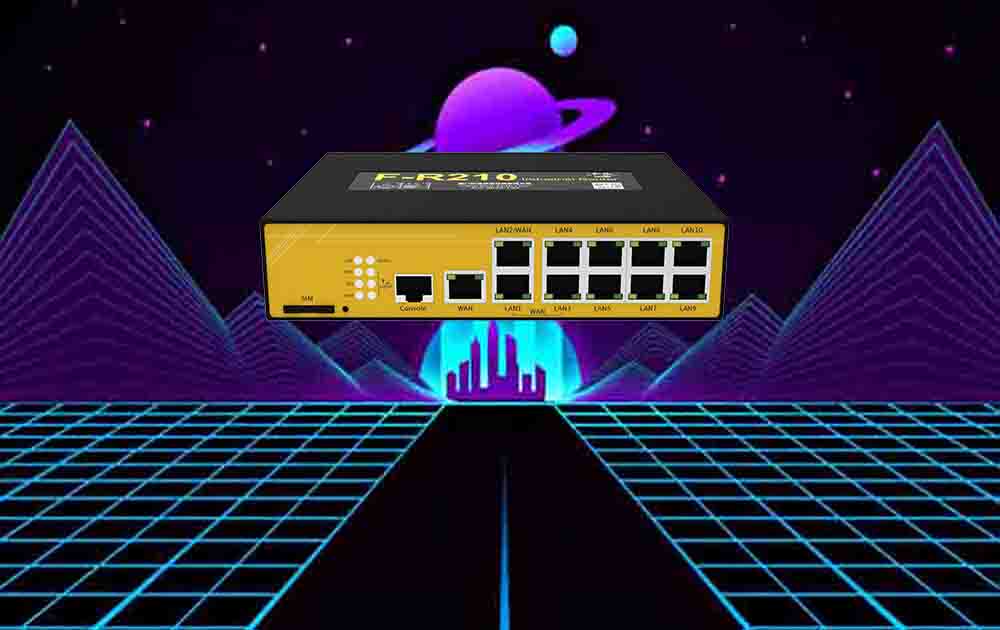An IoT gateway is a physical device or software program that serves as a connection point between the cloud and the controller, sensors and smart devices. All data moving between IoT devices and the cloud passes through the things network gateways, which can be dedicated hardware devices or software programs. The things network gateways can also be referred to as smart gateways or control layers.
1. What is the things network gateway?
As the Internet of Things grows, businesses find themselves challenged to integrate multiple devices and protocols, many of which have different power and connectivity requirements. This combination may also include legacy technologies. The things network gateways are becoming an important part of building a robust IoT and providing computing power in edge computing scenarios.
2. What functions does an IoT gateway perform?
The things network gateways have evolved to perform many tasks, from simple data filtering to visualization and complex analytics. These smart devices are helping drive the current wave of IoT expansion.
3. The multifunctional the things network gateway can do any of the following:
Facilitate communication with traditional or non-Internet-connected devices. Data caching, buffering, and streaming; data preprocessing, cleaning, filtering, and optimization; some data aggregation; inter-device communication/M2M; network functions and hosting real-time data; data visualization and basic data analytics via the things network gateway applications; short-term Data History Features; Security – Manage user access and network security features; device configuration management; system diagnostics.
4. The things network gateways and edge computing
In edge computing, critical data processing occurs at the data source, rather than centralized in cloud-based locations. Versatile IoT gateways are an important part of delivering edge computing capabilities to field or factory technicians. The things network gateways equipped with these capabilities are called "smart" gateways.
5. What is the role of the things network gateway?
The things network gateways act as network routers, routing data between IoT devices and the cloud. In the early days, most gateway devices only sent traffic in one direction: from IoT devices to the cloud. It is now common for gateway devices to handle inbound and outbound traffic. Outbound traffic is used to send IoT data to the cloud, while inbound traffic is used for device management tasks, such as updating device firmware.
Some IoT gateways do more than just route traffic. Gateway devices can sometimes be used to preprocess data locally at the edge before sending it to the cloud. In doing so, the appliance may deduplicate, aggregate or aggregate data to reduce the amount of data that must be forwarded to the cloud. This can have a big impact on response time and network transfer costs.
Another benefit of an IoT gateway is that it can provide additional security to the IoT network and the data it transmits. Features a specially designed the things network gateway with tamper detection, encryption, hardware random number generator and encryption engine. These and other features can help secure the things network gateways and protect individual devices from attacks.
6. How does an IoT gateway work?
A simple the things network gateway functions like a Wi-Fi router. The IoT system uses Wi-Fi to connect to the gateway, which then routes the IoT device data to the cloud. But more often, the things network gateways are much more complex.
One reason the things network gateways tend to be more complex than Wi-Fi routers is that IoT devices use several different protocols. Some of these protocols include Z-Wave, BACnet, Bluetooth Low Energy, and Zigbee. Therefore, the things network gateways may need to support various protocols to serve all IoT devices in an organization.
In addition to supporting these protocols, gateways must be able to route each type of IoT traffic to the appropriate destination. Data from industrial sensor collections may need to be sent to a database in the AWS cloud, while data from building security sensors may need to be directed to a SaaS vendor operating a cloud-based security portal.
Another reason the things network gateways can be more complex than Wi-Fi routers is that the things network gateways may need to cache data locally in case the internet goes down or the gateway is flooded with more data than it can handle.
Additionally, IoT gateways often support failover clusters or scale out to support increasingly larger workloads.
7. The things network gateways and edge computing
Some IoT devices generate large amounts of data. This can become a problem if an organization has a large number of devices in its IoT ecosystem and is trying to send data from all of those devices to the cloud. IoT devices can drain an organization's available internet bandwidth while also incurring significant cloud storage costs.
One use of a gateway is to create a communication link between the IoT environment and the cloud. One way to avoid these types of problems is to use edge computing for at least some of the required data processing. This approach reduces the amount of data that must be sent to the cloud, helping to reduce costs and bandwidth consumption.
Imagine an organization has a fleet of IP-enabled security cameras, all streaming data in real time. It probably doesn't make much sense to send all raw security footage to the cloud for data processing. This is especially true if some cameras mainly monitor unoccupied areas.
Processing video footage at the edge is more efficient than uploading all security footage in real time. Edge devices can differentiate between unimportant security footage (such as footage of an empty room) and footage that an organization deems worth keeping. The edge device can take the material that must be reviewed and send it to the gateway device, which uploads the data to the cloud.
The things network gateways are important for managing and securing IoT devices, and they can also help organizations reduce IoT-related Internet bandwidth consumption.




















